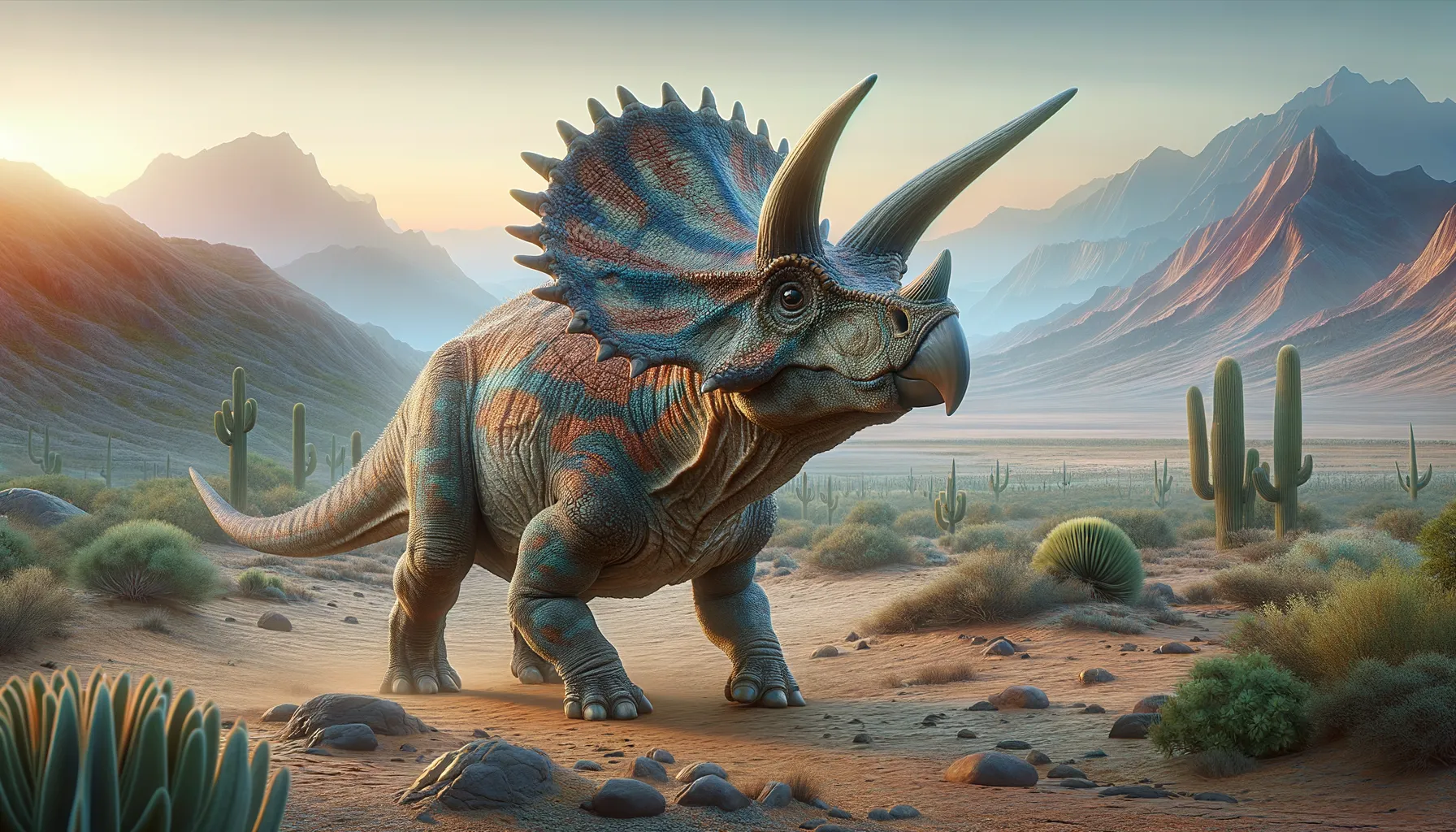
Yamaceratops
Small horns, big impact on dinosaur evolution!
Period
Cretaceous
Length
Measured approximately 1 meter long.
Height
Stood around 0.6 meters tall.
Weight
Weighed about 15 to 20 kilograms.
Yamaceratops was a small, early horned dinosaur that lived during the Cretaceous period. Known for its distinct frill and beak-like mouth, it was a herbivore that roamed the landscapes of what is now Mongolia. Despite its size, Yamaceratops contributed valuable insights into the early evolution of the horned dinosaurs, showing a range of anatomical features that shed light on their diverse lineage.
Diet
Yamaceratops was a herbivore, feeding mainly on low-lying plants. Its beak-like mouth was ideal for cropping vegetation, and it would have browsed on ferns, cycads, and other prehistoric flora of its environment.
Hunting
As a herbivore, Yamaceratops did not hunt for food. Instead, it foraged for plants, leveraging its beak to cut through vegetation, and feeding primarily on flowering plants and ferns available in its habitat.
Environmental challenges
Living in the Cretaceous period, Yamaceratops faced a range of environmental challenges, including fluctuations in climate and competition for food resources with other herbivores. Predation was a constant threat from larger carnivorous dinosaurs, necessitating vigilance and perhaps reliance on its frilled head for display or defense. Additionally, the conditions of the prehistoric Mongolian landscape could have presented challenges in terms of finding suitable nesting and living areas.
Speed
Relatively slow-moving due to its small size.
Lifespan
Lived roughly 10 to 20 years.
First discovery
Discovered in Mongolia in 2003.
Fun Facts
- Yamaceratops was a small herbivorous dinosaur that lived during the Late Cretaceous period.
- It belonged to the ceratopsian family, which are best known for the famous Triceratops.
- Unlike its more famous relatives, Yamaceratops didn’t have large horns or a frill, but it did have a modestly sized frill at the back of its head.
- Yamaceratops was discovered in Mongolia, in a region rich with dinosaur fossils.
- Its name means 'Yama horned face', named after Yama, the Buddhist lord of the underworld, reflecting the discovery location’s proximity to a Buddhist monastery.
- Yamaceratops was relatively small, estimated to be about the size of a large dog.
- It provides paleontologists with valuable insights into the early evolution of horned dinosaurs.
Growth and Development
Yamaceratops, like many ceratopsians, likely hatched from eggs and underwent significant growth changes as it matured. Its frill and beak would have developed as it aged, possibly serving various functions as it grew. The growth rate and developmental milestones may have been influenced by environmental conditions and the availability of resources.
Habitat
Yamaceratops inhabited the ancient floodplains and forests of what is now Mongolia during the Cretaceous period. These environments were lush with diverse plant life, providing ample food sources. The region's seasonal climate may have influenced its movement patterns and led to adaptations for both feeding and shelter.
Interaction with other species
Yamaceratops likely coexisted with other dinosaur species, both herbivores, and predators, in its ecosystem. Interactions could have included competition for plant resources amongst other herbivores and potential predator-prey dynamics with carnivorous dinosaurs. Its presence contributed to the ecological balance within its prehistoric community.
Natural lifespan
Yamaceratops had a natural lifespan of approximately 10 to 20 years.
Reproduction
Yamaceratops, like many dinosaurs, reproduced by laying eggs. Nests would have been built in safe areas, likely guarded or monitored by adults. Hatchlings were probably vulnerable to predation, requiring a degree of parental investment or social structure for protection.
Social behaviour
Though the social behavior of Yamaceratops is not well-documented, it's plausible that it exhibited some level of social interaction or grouping behavior, common among ceratopsians. Such behavior might have included group foraging or basic social structures for juvenile care.
Fossil locations
Fossils of Yamaceratops have primarily been found in Mongolia. These findings have provided crucial evidence for the study of early horned dinosaurs, helping paleontologists understand the evolutionary traits and distribution of ceratopsians in the region.
